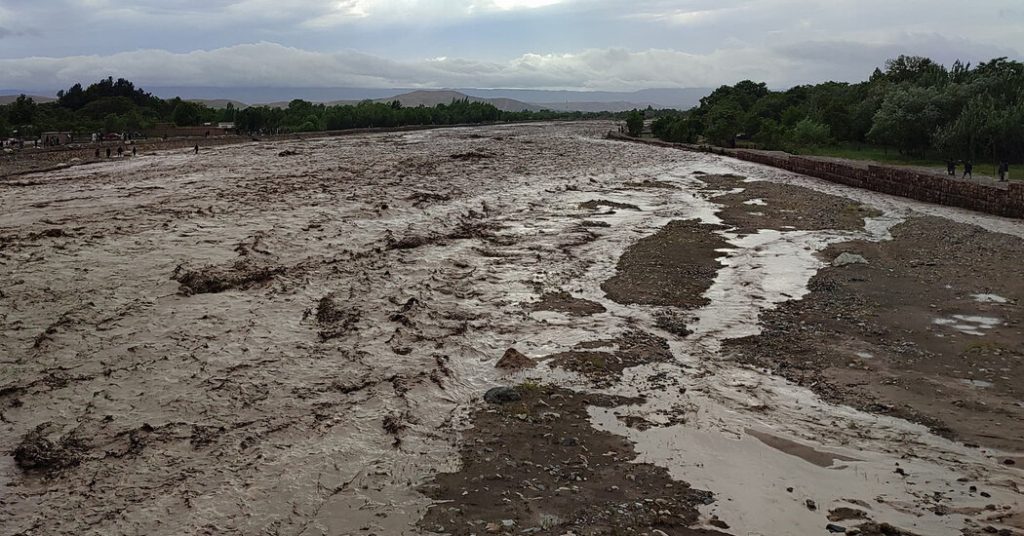Heavy seasonal rains have caused flash floods across Afghanistan, resulting in the deaths of at least 50 people in Baghlan province, with 100 more missing and thousands displaced. The worst devastation was seen in Baghlan, where most of the victims were women and children. Additionally, one person was killed in Badakhshan province, where homes, small dams, and bridges were destroyed, and 2,000 livestock were killed. Floods also affected Ghor and Herat provinces, with doctors being deployed in Parwan province to assist those affected.
Images released by the government showed roads in Baghlan submerged in muddy water, with people attempting to move stuck vehicles. The recent flooding in Afghanistan is exacerbated by the El Niño phenomenon, which has raised the risk of floods and hindered crop production and food supplies, especially in the north and northeast regions. Last month, flash floods resulted in over 100 deaths, the destruction of over 1,000 homes, and ruined farmland spanning 60,000 acres. The country’s economic crisis, natural disasters, and ongoing conflicts with neighboring countries have further compounded the challenges faced by Afghanistan.
Rescue teams have been mobilizing food, aid, medical teams, and ambulances to the affected areas in Baghlan province, according to the Health Ministry. The damage caused by the floods to roads, bridges, and the power infrastructure will hinder the delivery of humanitarian aid in the region. Given that a significant portion of the population relies on agriculture for their livelihood, the economic impact of floods in Afghanistan is especially devastating.
The International Rescue Committee has warned that any additional flooding will have a detrimental impact on a population already struggling with economic collapse, high levels of malnutrition, and ongoing conflict. The organization highlighted the importance of providing assistance to those affected by the floods to prevent further harm to vulnerable communities. The situation in Afghanistan is further complicated by the need to address the multiple challenges facing the country, including the provision of essential services and support to those impacted by the floods.
In recent years, Afghanistan has faced a series of natural disasters, including floods, droughts, and landslides, which have had a severe impact on the population. The latest floods have added to the challenges faced by the country, which is already dealing with an economic crisis and ongoing conflict. The government’s efforts to provide relief to those affected by the floods are crucial in ensuring the well-being of communities, restoring essential services, and addressing the immediate needs of the population.
The floods in Afghanistan have highlighted the vulnerability of communities to natural disasters and the importance of preparedness and response measures to mitigate their impact. The government, humanitarian organizations, and international partners must work together to support those affected by the floods, provide emergency assistance, and help rebuild communities in the aftermath of the disaster. By addressing the immediate needs of the population, ensuring access to essential services, and supporting recovery efforts, it is possible to mitigate the impact of natural disasters and improve the resilience of communities in Afghanistan.








